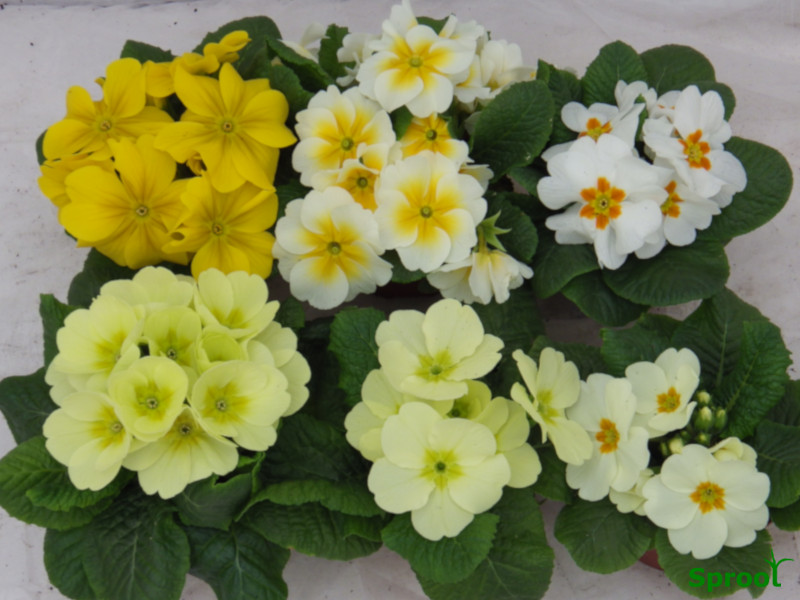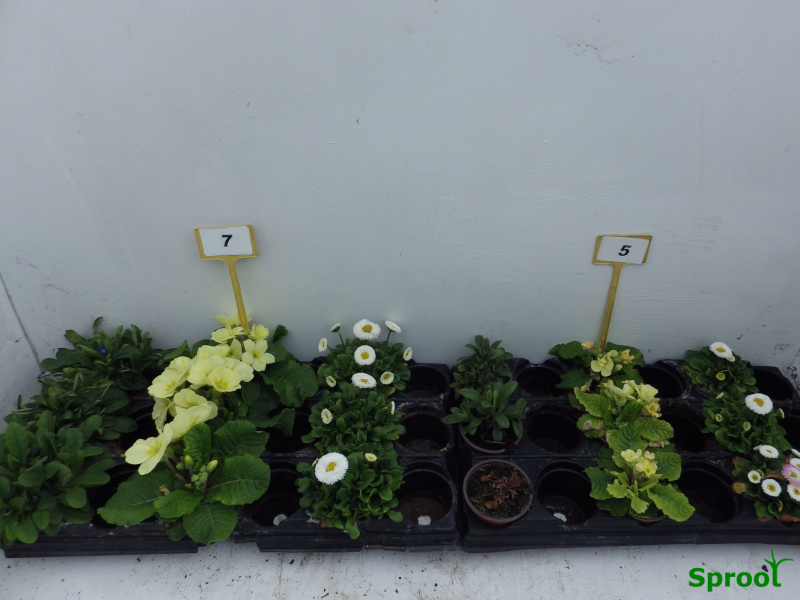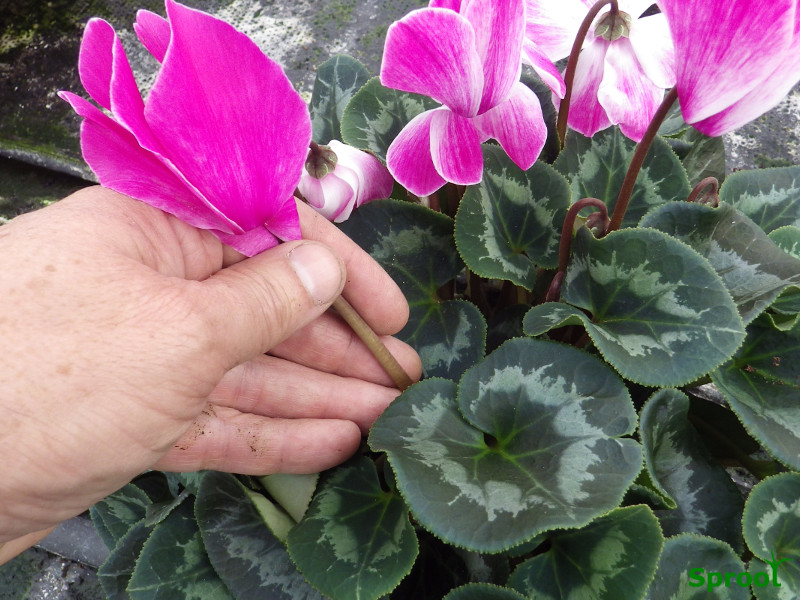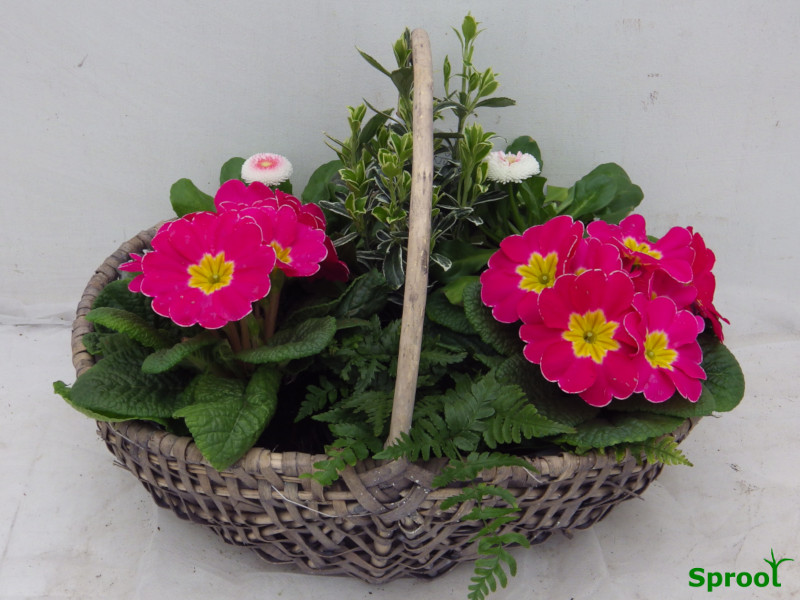Probably the most popular spring flower.
Stunning colours often sweetly scented they brighten up any garden but also make great patio pots or house plants.
The first flowers of spring, primula came from the Latin word Primus, meaning first.
The true primrose is our native spring flowering plant with pale yellow flowers often found in hedgerows and woodland.
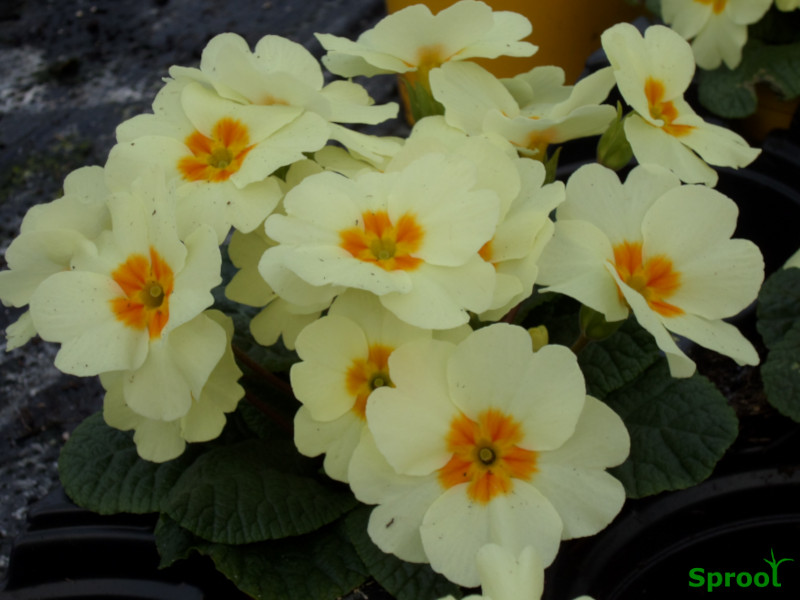
We use primrose to mean any of the multi-coloured plants on sale through the spring. They are now a mixture of species some have stems like a polyanthus but most have a crown of flowers.
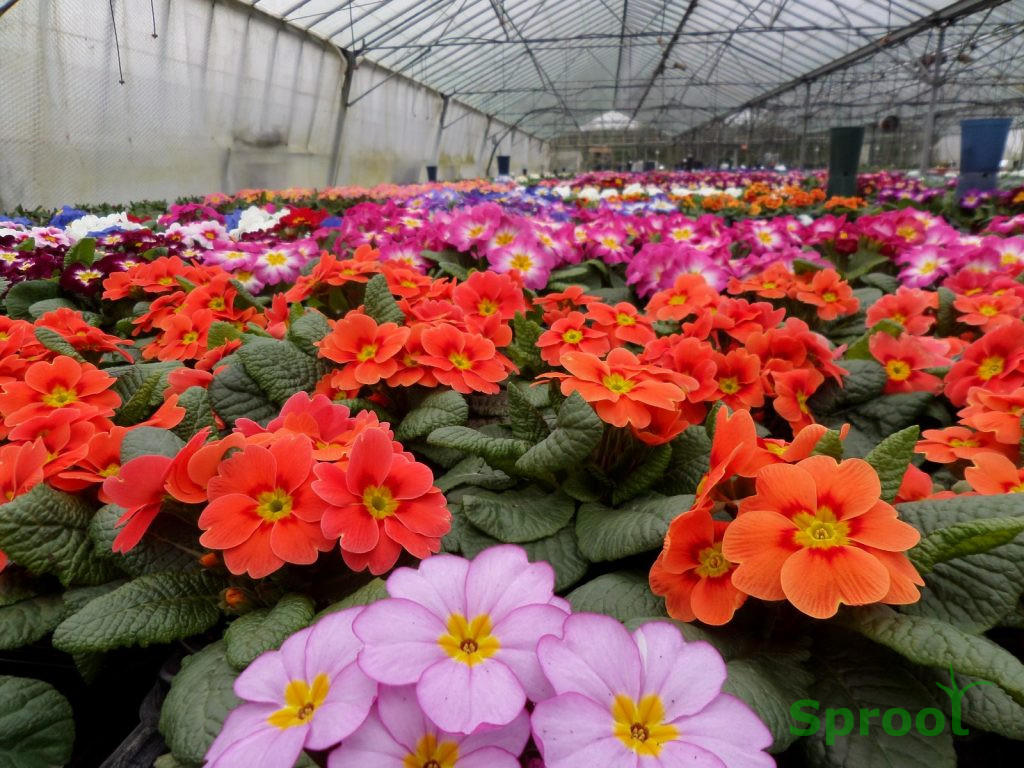
The breeders have been hard at work for centuries creating beautiful almost hand-painted flowers in a wide range of colours.
There are lots of types to buy and collect, most of the primroses on sale in stores and supermarkets will be the traditional primrose type. You will have to visit garden centres, specialist primula nurseries or society shows to find old and unusual varieties.
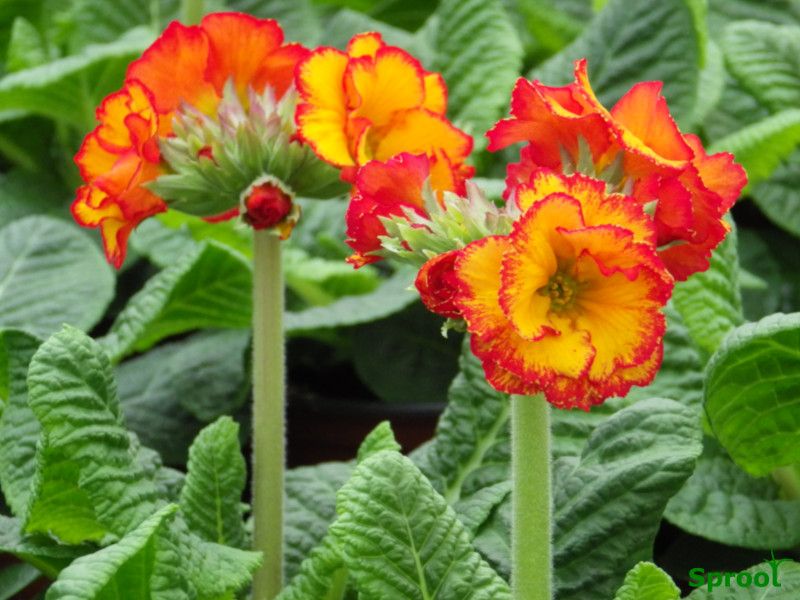
Both primroses and polyanthus have been cultivated in European gardens since the sixteenth century.
However, most of the serious breeding work started in Victorian times, gradually gaining momentum and reaching a veritable explosion of activity during the second half of this century. The use of primroses as pot plants is a relatively new phenomenon of the past thirty years or so.
Before that primrose were grown cold or field-grown in much the same way as pansies and other spring-flowering bedding plants.
There are very few if any production statistics for the crop, but Dutch auction statistics indicate the production of around 2.5 million plants.
In Germany, the birthplace of many primrose varieties, the figure is much higher, and in Britain estimates range from ten million plants upwards. It makes the primrose one of our most important seed raised pot plants
When do I buy primroses
Primroses can be found on sale from September until March, when should I buy them?
September to December
If you buy them in the autumn you have two choices.
Plants in flower can be used to make autumn & winter planters, they will flower through most winters and often flower again in the spring.
Plants with no visible buds or flowers will need to be kept over the winter to flower in the spring.
January to March
This is the peak primrose season, The best range of colours can be found during this time, normally sold in flower they can be used to add colour and scent to your planters.
What should I do with my primroses
You can use them as house plants, but give them a cool bright spot, a windowsill would be good, they won’t last as long as one planted outside, but you can enjoy the scent. Double flowered primroses can make good house plants.
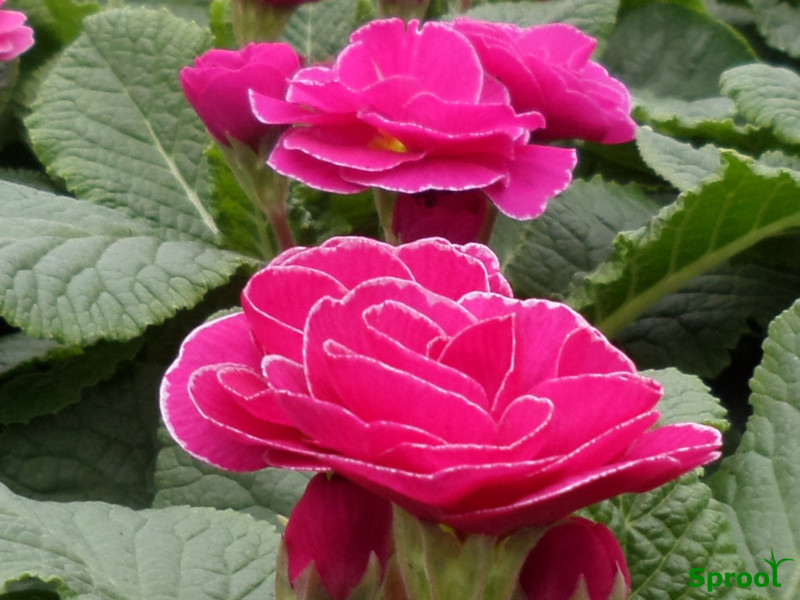
Use them outside in planters or hanging baskets but make sure they are in bud or flower when you plant them. If they are small with no buds, they won’t grow as it will be too cold outside.
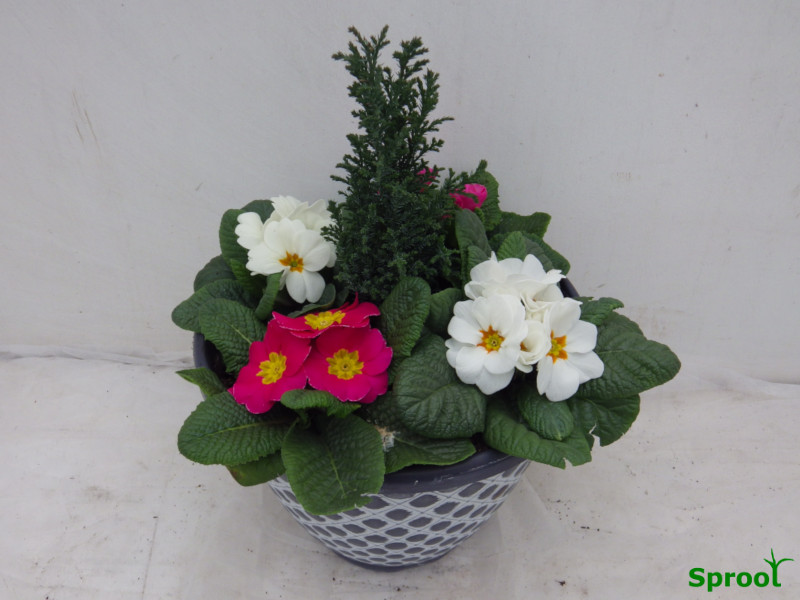
Most modern primroses can be planted out in flower and will stand a few degrees of frost, there is some variation but generally, dark-leaved varieties will be hardier.
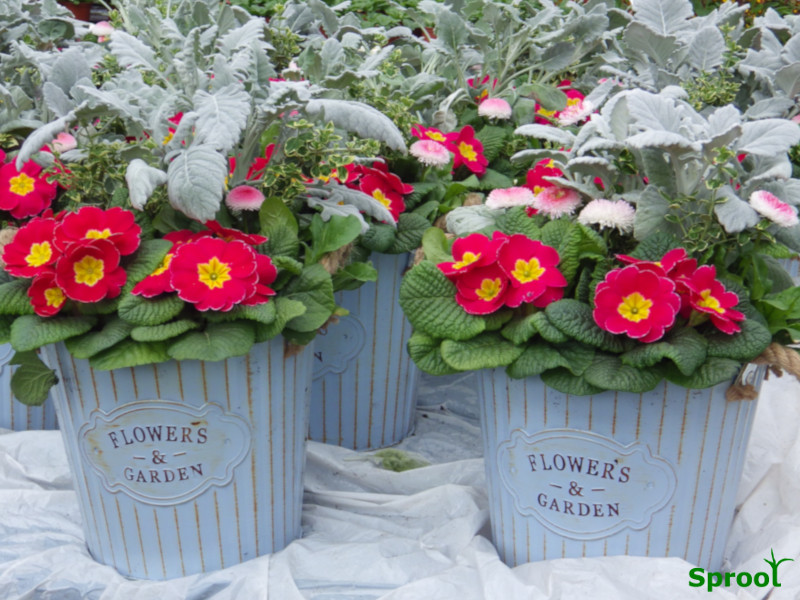
Where to buy primroses
Primroses are grown on the nursery in cool bright greenhouses over the winter, they don’t like warm dark stores and can deteriorate very quickly.
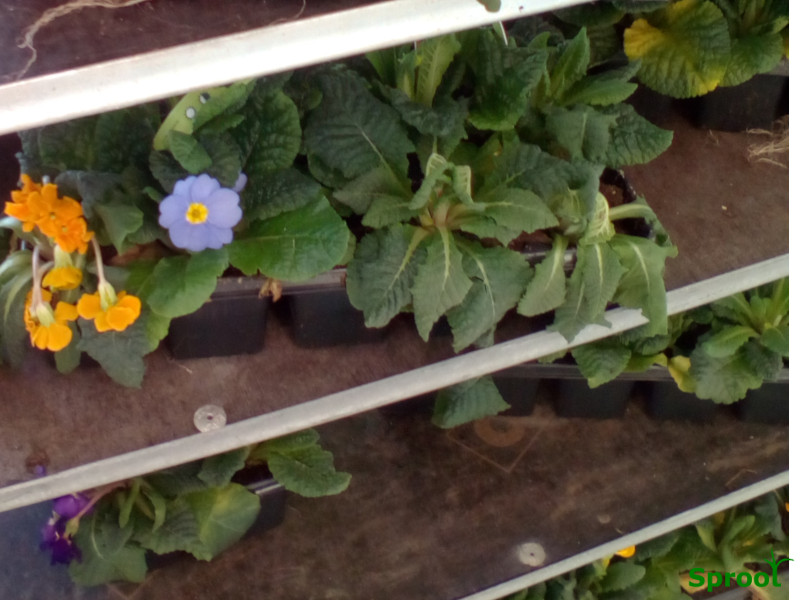
Avoid stretched or yellow-leaved plants. Primroses are prone to botrytis a grey mould that spreads in warm damp conditions.
The best place to buy primroses is a garden centre or nursery, they can be displayed in a brightly lit cool area, protected from severe weather.
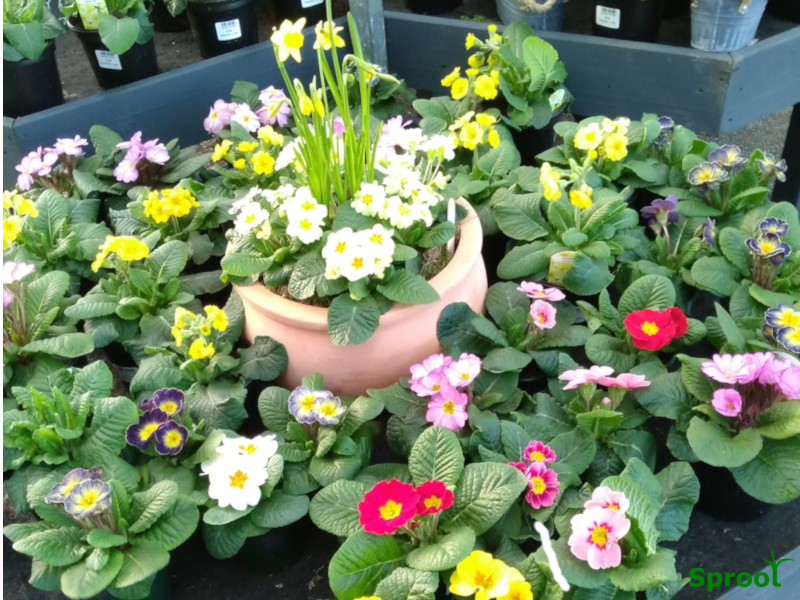
Is the cheapest the best?
Size matters with primroses, generally speaking, the bigger the pot size the bigger the plant and quantity of flowers.
You can buy primroses in lots of different pot sizes, starting with 6 or 10 bedding packs, then the widely used 9cm pot, 10.5 – 11cm is probably the best for leaf size and flower and finally 13cm or 1 litre is as about as big as you need to go.
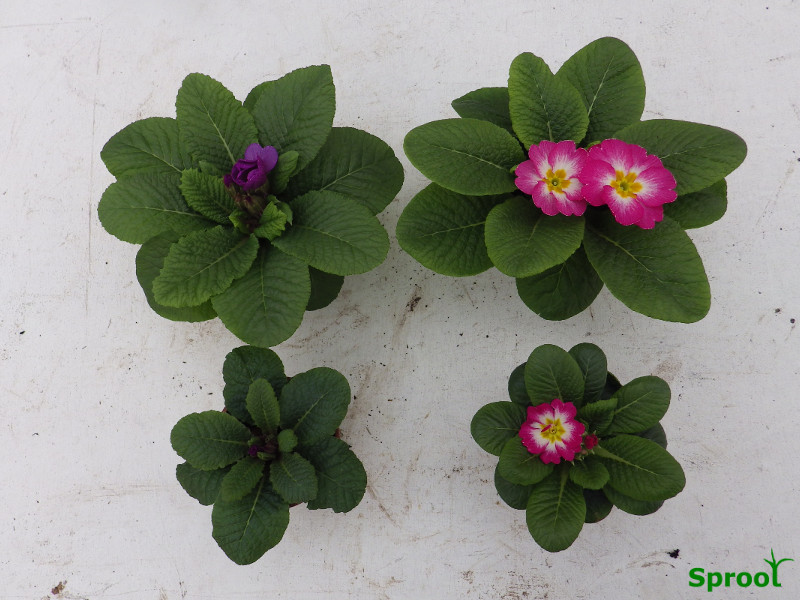
In this picture, you can see the difference between the 9cm at the front and the 10.5cm plant at the back. We don’t use any growth regulators the difference in size is purely caused by the smaller pot restricting the roots
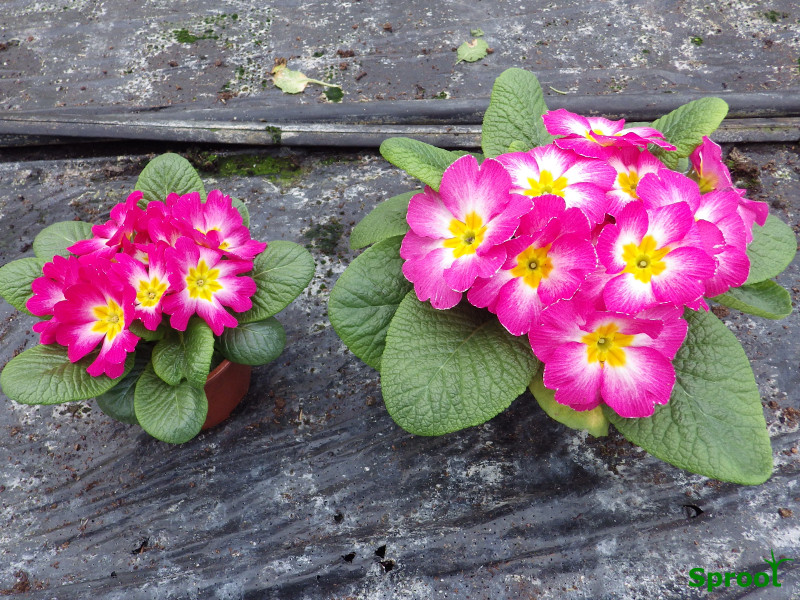
I think you can see that the larger pot will give you bigger and better flowers, Why does this matter? Well, you will pay more per plant for 11cm but get more flowers, so you will need fewer plants.
Primrose packs can look better value but there is a problem, to make sure the plants stay small enough, the grower has to use growth regulators to keep them small.
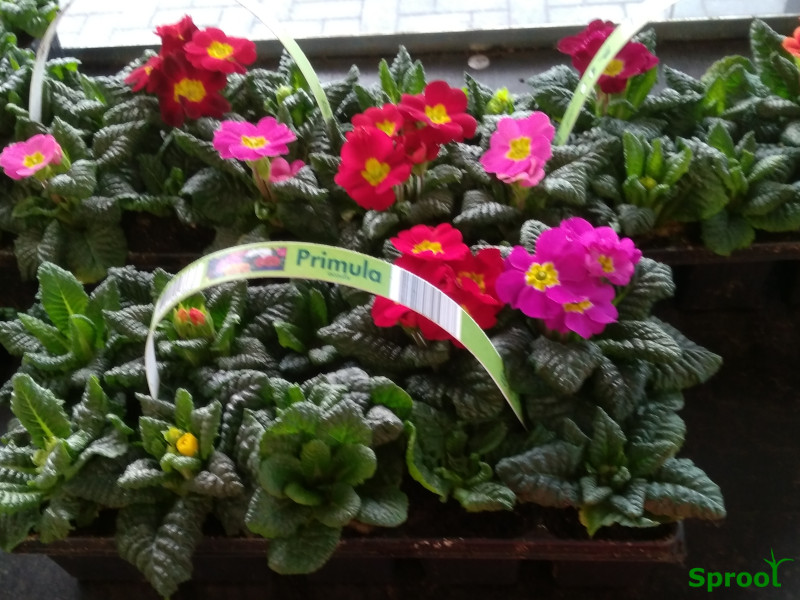
You can see in this picture the leaves are dark green and have a slightly squashed look, another give away is the number of leaves, roughly 10 the same as the 11cm plant but the plant is less than half the size.
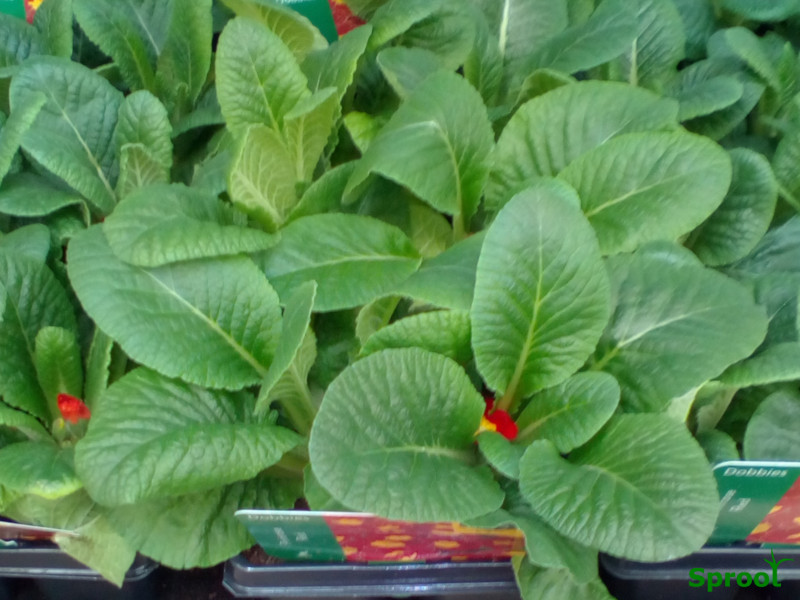
In this picture, the grower has been a bit late with the growth regulator, the first leaves have grown almost full size, The late application has affected the flowers, they will now be small and stunted.
Packs of primroses are grown to be sold cheaply, they have a limited range of colours, the grower has to use the cheapest plants and also has to try and make sure they all flower at once, this is easier if they avoid all the fancy colours.
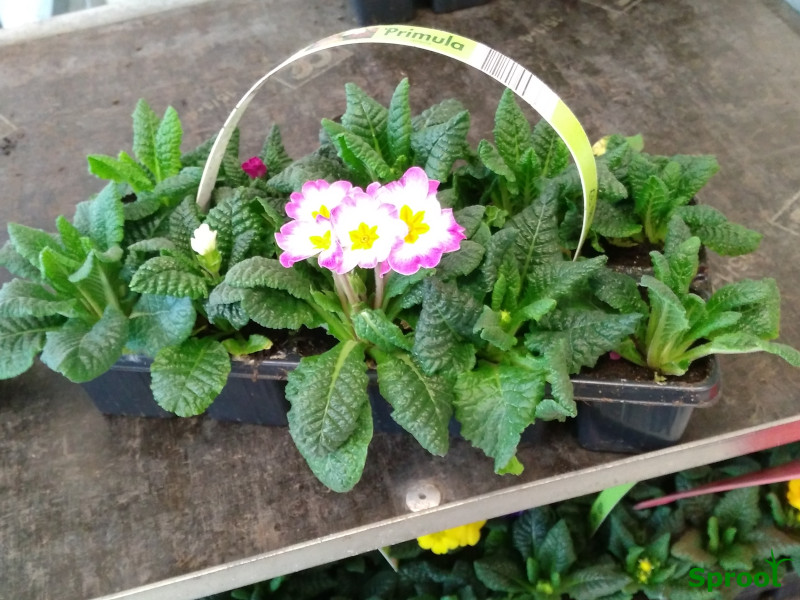
So while a pack may look good value, but they are a compromise between price and performance, the one in the picture shows the problems of growing in packs. One plant hasn’t reacted to the growth regulator and flowered a bit early, the rest should flower more evenly but the flowers look small and stunted.
What to avoid when buying primroses
Dry plants
Avoid any dry plants they won’t recover without suffering damage.
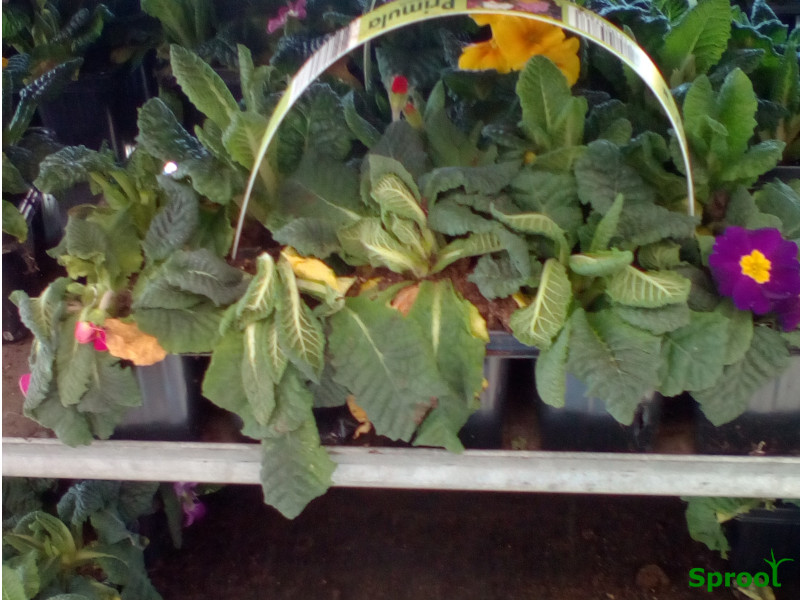
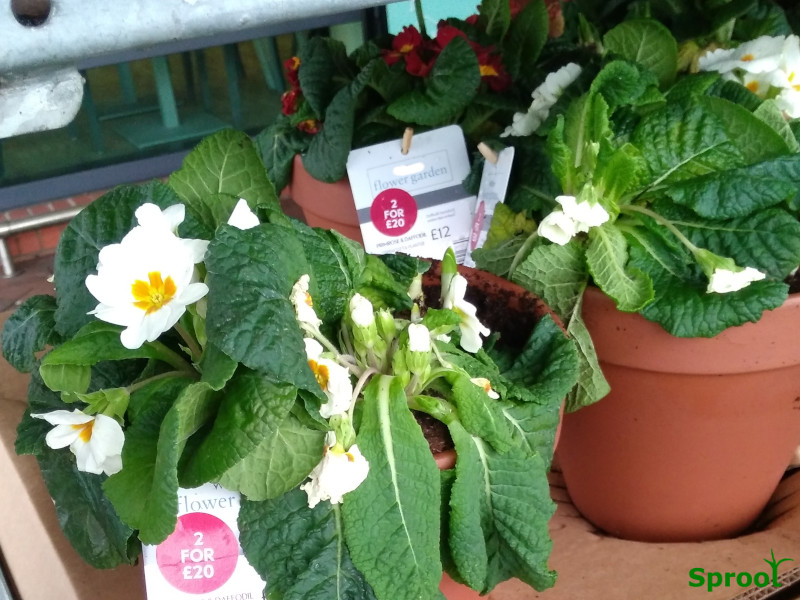
Find out more about buying dry plants
Kept in the dark
Grown on the nursery in cool bright greenhouses over the winter, they don’t like warm dark stores and can deteriorate very quickly. You can still find good primroses in the store but you have to buy them as soon as they come in, they have a very short shelf life
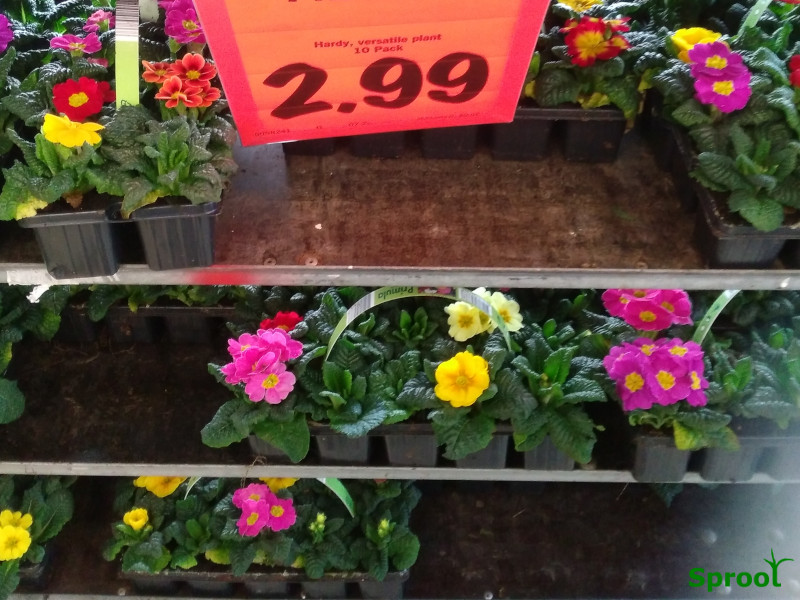
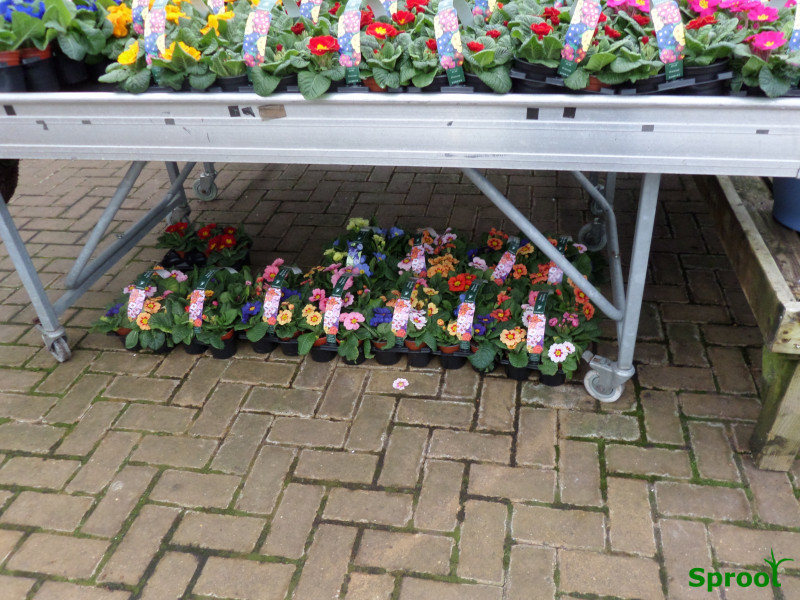
Garden centres can still get it wrong, there is no reason to keep the plants under the bench, also the plants on the bench are still packed in trays. On the nursery we grow the plants with some space between them to stop the leaves overlapping, this prevents yellow leaves and disease.
If primroses are sold spaced apart, this is a good sign.
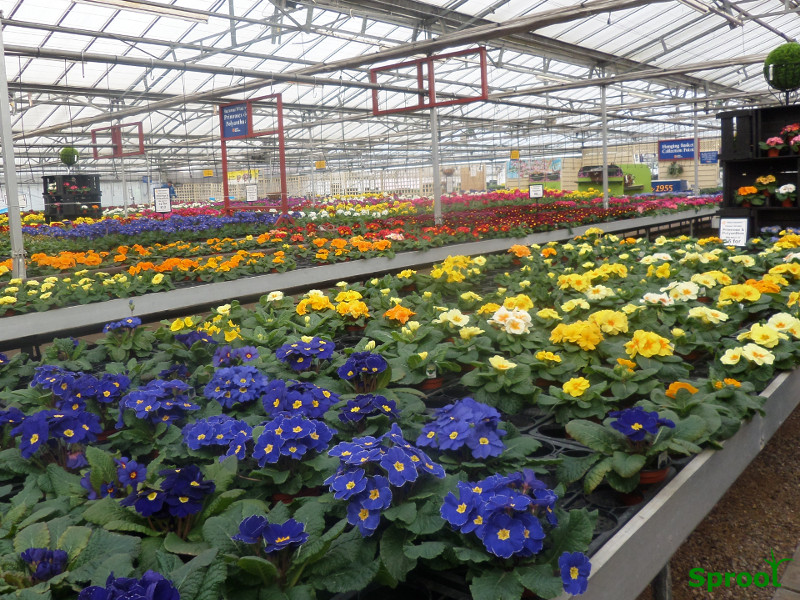
Avoid plants kept in the dark find out more
We can help read our guide to buying plants

